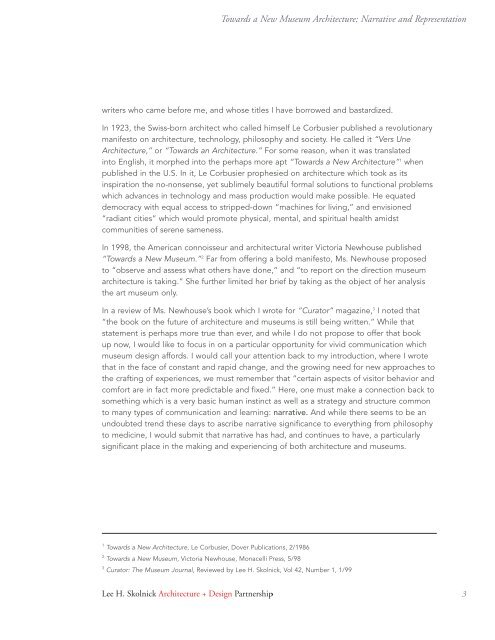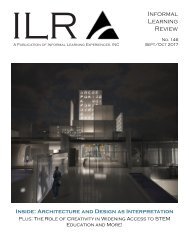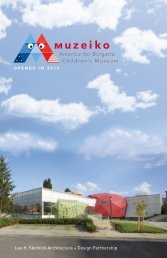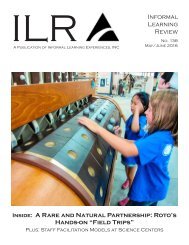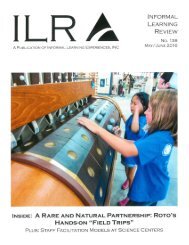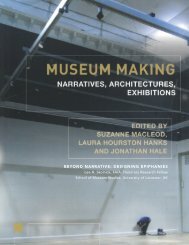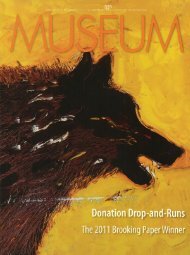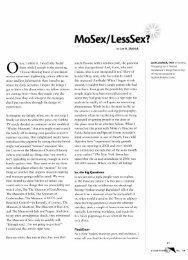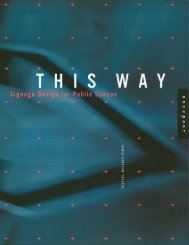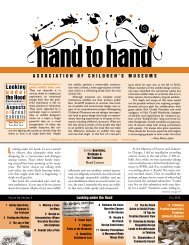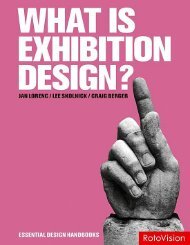Reshaping Mus-Leicester
- No tags were found...
You also want an ePaper? Increase the reach of your titles
YUMPU automatically turns print PDFs into web optimized ePapers that Google loves.
Towards a New <strong>Mus</strong>eum Architecture: Narrative and Representation<br />
writers who came before me, and whose titles I have borrowed and bastardized.<br />
In 1923, the Swiss-born architect who called himself Le Corbusier published a revolutionary<br />
manifesto on architecture, technology, philosophy and society. He called it “Vers Une<br />
Architecture,” or “Towards an Architecture.” For some reason, when it was translated<br />
into English, it morphed into the perhaps more apt “Towards a New Architecture” 1 when<br />
published in the U.S. In it, Le Corbusier prophesied on architecture which took as its<br />
inspiration the no-nonsense, yet sublimely beautiful formal solutions to functional problems<br />
which advances in technology and mass production would make possible. He equated<br />
democracy with equal access to stripped-down “machines for living,” and envisioned<br />
“radiant cities” which would promote physical, mental, and spiritual health amidst<br />
communities of serene sameness.<br />
In 1998, the American connoisseur and architectural writer Victoria Newhouse published<br />
“Towards a New <strong>Mus</strong>eum.” 2 Far from offering a bold manifesto, Ms. Newhouse proposed<br />
to “observe and assess what others have done,” and “to report on the direction museum<br />
architecture is taking.” She further limited her brief by taking as the object of her analysis<br />
the art museum only.<br />
In a review of Ms. Newhouse’s book which I wrote for “Curator” magazine, 3 I noted that<br />
“the book on the future of architecture and museums is still being written.” While that<br />
statement is perhaps more true than ever, and while I do not propose to offer that book<br />
up now, I would like to focus in on a particular opportunity for vivid communication which<br />
museum design affords. I would call your attention back to my introduction, where I wrote<br />
that in the face of constant and rapid change, and the growing need for new approaches to<br />
the crafting of experiences, we must remember that “certain aspects of visitor behavior and<br />
comfort are in fact more predictable and fixed.” Here, one must make a connection back to<br />
something which is a very basic human instinct as well as a strategy and structure common<br />
to many types of communication and learning: narrative. And while there seems to be an<br />
undoubted trend these days to ascribe narrative significance to everything from philosophy<br />
to medicine, I would submit that narrative has had, and continues to have, a particularly<br />
significant place in the making and experiencing of both architecture and museums.<br />
1 Towards a New Architecture, Le Corbusier, Dover Publications, 2/1986<br />
2 Towards a New <strong>Mus</strong>eum, Victoria Newhouse, Monacelli Press, 5/98<br />
3 Curator: The <strong>Mus</strong>eum Journal, Reviewed by Lee H. Skolnick, Vol 42, Number 1, 1/99<br />
3


